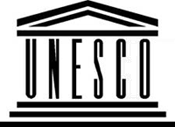Four Steps to Success in Media Literacy
|
|
What’s needed to ensure the development of media literacy — in a country — in a district? — even a school? Notes from a 1991 UNESCO conference attended by CML Founder Elizabeth Thoman
Unless a country has all four elements in place, ongoing, and in sync with each other, it will not be able to successfully implement media education for all of its citizens.
— Elizabeth Thoman, Center for Media Literacy, Los Angeles
What does it take to put media education into place in a country's educational system? At the 1991 conference, "New Directions in Media Literacy," sponsored by UNESCO, the British Film Institute, the Council of Europe and others at the University of Toulouse, the following four steps were identified as required for success. Reflection on the current status of each one in terms of the U.S. was prepared in the spring of 1995:
- Establishment of curriculum guidelines or "frameworks" by appropriate educational authorities (national or state). In the U.S. there are no nationally mandated curriculum guidelines for any subject; it is left to each state to determine, usually, by state legislation. To be at all useful, however, legislation must also include allocation of funds for development, dissemination and training.
At the federal level, the Department of Education can stimulate the development of new educational innovations through grants for programs and resources to implement federal priorities (e.g. safety education) but this does not guarantee universal adoption.
- Teacher training programs at the university level. These are not degree programs in journalism or broadcasting (which are primarily career oriented) but rather degree programs in education with a specific specialization or major in "media studies." Currently no US institution of higher learning provides an education degree (undergraduate or graduate) to prepare teachers for media literacy. A pilot program for an MA level degree is currently being developed for teachers in Billerica, MA through Fitchburg State College and Merrimack Education Center under the direction of Renee Hobbs, EdD. A number of Canadian institutions provide credentialed courses to meet Ontario certification requirements but to get a full academic degree in the field, one must study at one of several British universities.
- Teacher support — in-service educational opportunities, summer institutes, national organizations (similar, for example, to National Council for Teachers of English which holds an annual convention and specialized conferences throughout the year, publishes professional journals and establishes credentials and standards for the teaching of the language arts) through which teachers grow and develop in their chosen specialization — and through which the specialization itself evolves and develops through feedback by grassroots teachers. Currently teachers of media literacy in the U.S. are resourced by several small, organizations that publish newsletters, sponsor occasional training opportunities or conferences, offer Internet connections and/or publish teaching resources.
- Educational resources for teaching — writing, pilot testing, publishing and evaluation of the textbooks, lesson plans, activity sheets, videos, videodiscs and other A-V materials, posters, supplemental booklets, etc. needed for teaching — developed in collaboration with all of the above. In the U.S., a national media literacy review committee evaluates new resources for the Center for Media Literacy, the largest producer and distributor of media literacy materials for teaching. Their annual catalog is the "L.L. Bean" catalog of media literacy resources for home, school, church and community groups.



